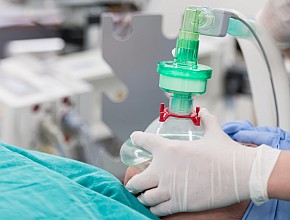Below are the articles selected as suggested reading for this week by editors from McMaster University.
AABB CPGs: RBC transfusion thresholds and storage (expanded)
Yazer MH, Triulzi DJ. AABB Red Blood Cell Transfusion Guidelines: Something for Almost Everyone. JAMA. 2016 Nov 15;316(19):1984-1985. doi: 10.1001/jama.2016.10887. PubMed PMID: 27732707.
Heddle NM, Cook RJ, Arnold DM, et al. Effect of Short-Term vs. Long-Term Blood Storage on Mortality after Transfusion. N Engl J Med. 2016 Nov 17;375(20):1937-1945. PubMed PMID: 27775503.
This summary expands on Publications of the Week from October 24, 2016: http://empendium.com/mcmtextbook/week_publications/152117,highlights-for-monday-october24.
In these clinical practice guidelines, the authors endorse the historically decreasing threshold of hemoglobin level at which they suggest or recommend transfusion of red blood cells.
The authors indicate that over 100 million units of blood are collected worldwide each year. They analyzed over 30 experimental studies in which different transfusion-triggering thresholds were investigated and recommend a lower threshold (7 g/dL) rather than a higher threshold (10 g/dL) as a trigger for transfusion for most hospitalized adult patients who are hemodynamically stable. A less restrictive threshold (8 g/dL) is recommended for patients undergoing cardiac or orthopedic surgery, or those with preexisting cardiovascular conditions. There was no definitive indication that higher threshold was detrimental, other than requiring a larger number of transfusions. Those thresholds do not apply to patients with acute coronary syndromes (with some inconclusive evidence that restrictive strategy may be harmful), severe thrombocytopenia in the setting of hematological or oncological disease, and in the setting of chronic transfusion-dependent anemia.
In the additional part of the guidelines, the authors state that patients may receive blood units within their usual licensed period (generally up to 42 days since donation) rather than preferentially only fresh blood (within 10 days of donation). This recommendation has been supported by a subsequent study by Heddle et al.
Bleeding prevention in patients with AF undergoing PCI
Jolly SS, Natarajan MK. Atrial Fibrillation and PCI - Do We Still Need Aspirin? N Engl J Med. 2016 Dec 22;375(25):2490-2492. doi: 10.1056/NEJMe1613474. PubMed PMID: 28002706.
This study provides some new information about treatment of patients with atrial fibrillation (AF) who undergo coronary stent insertion.
Thrombosis prevention therapy in patients with AF undergoing percutaneous coronary intervention (PCI) is controversial. It usually involves dual antiplatelet therapy (DAPT) (including acetylsalicylic acid) and an antithrombotic agent (usually warfarin).
In this study, patients received (1) standard therapy (warfarin plus DAPT); (2) low-dose rivaroxaban (15 mg daily) plus an antiplatelet drug (clopidogrel, prasugrel, or ticagrelor, but not acetylsalicylic acid); or (3) a very low dose of rivaroxaban (2.5 mg twice daily) plus DAPT. Observations included high probability of bleeding requiring medical attention (22.6% vs 14.6% vs 15.8%) with similar rates of major bleeding (3.3% vs 2.1% vs 1.9%). There were no major differences in adverse cardiovascular events, although the number of such events among the 2,100 participating patients was relatively low (6.0% vs 6.5% vs 5.6%).
In the accompanying editorial, the authors call for a larger study and remind that a high frequency of bleeding in this situation may direct choice of a more conservative management (ie, DAPT while avoiding warfarin) in patients with a low CHADS2 score (0 or 1).
Screening for Colorectal Cancer: USPSTF Recommendation Statement
Lin JS, Piper MA, Perdue LA, et al. Screening for Colorectal Cancer: Updated Evidence Report and Systematic Review for the US Preventive Services Task Force. JAMA. 2016 Jun 21;315(23):2576-94. doi: 10.1001/jama.2016.3332. Review. Erratum in: JAMA. 2016 Aug 2;316(5):545. JAMA. 2016 Oct 4;316(13):1412. PubMed PMID: 27305422.
Practice guidelines from the US Preventive Services Task Force remind physicians about the effectiveness of colon cancer screening. They also emphasize it is more important that screening is performed at all, and less important which test is done.
The authors of the guidelines remind us that about 50,000 people annually die from colon cancer in the US alone. On the basis of existing evidence as well as modeling exercise, they conclude that screening for colon cancer should be offered to those aged 50 to 75 years. In individuals between the ages of 76 and 85 years, the decision is less clear, with benefits likely larger among those who did not have previous screening and are in overall good health.
In the analysis of existing data, the authors indicate that direct experimental evidence for colon cancer screening reducing mortality is available for flexible sigmoidoscopy and guaiac-based fecal occult blood testing. The conclusion that other tests, including colonoscopy, have similar efficacy requires relying on observational data and modeling.
In the accompanying publication describing evidence, the estimated benefit of different strategies, expressed in life-years gained per 1,000 persons examined, ranged from 221 years for flexible sigmoidoscopy every 5 years through about 250 years for fecal tests to 270 years for colonoscopy. The estimated number of colon cancer deaths averted ranged from 20 to 24 per 1,000 persons screened. The authors did not recommend any specific tests in preference to others, indicating that there are no head-to-head studies allowing such direct reasoning.
 English
English
 Español
Español
 українська
українська





